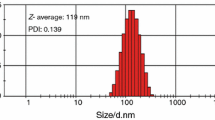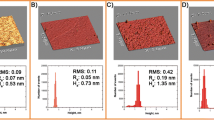Summary
A model membrane system was used to investigate the ability of specific membrane constituents to modulate the precipitation of calcium phosphate. Intraliposomal precipitation was induced in phosphate-encapsulated liposomes composed of 7:2:1 molar mixtures of phosphatidylcholine (PC), dicetyl phosphate (DCP), and cholesterol (Chol) by ionophore-supported (X-537A) Ca2+ uptake. Extraliposomal precipitation occurred when these reactions were initiated in metastable external solutions. In this case, the endogenously formed crystals penetrated through the enclosing lipid bilayers and seeded the external solution phase. Transmission electron microscopy (TEM) was used to monitor the effect of acidic phospholipids [phosphatidic acid (PA), phosphatidylserine (PS), phosphatidylinositol (PI), phosphatidylglycerol (PG)] on the precipitation reactions when these molecular species were incorporated into the liposome membranes. Compared with the precipitation reactions in 7PC:2DCP:1Chol liposomes containing no acidic phospholipids, calcium phosphate formation in the presence of monoester phosphate (PA) and amino-(PS) phospholipids was inhibited. Analyses of the lipid-mineral interactions in PA-containing (10 mol%) liposomes revealed close physical contact between the small crystals of apatite and the inner lipid bilayers; there was only minimal extraliposomal precipitation. A few small crystals adhered to the external surfaces of the liposomes. In PS-containing liposomes, lipid-mineral interactions were dependent upon the DCP content of the lipid membrane. Discrete clusters of crystals formed within the interior aqueous compartment when intraliposomal precipitation was initiated in 7PC:2DCP:1Chol liposomes doped with up to 10 mol% PS. There was no evidence for specific associations between these crystals and the enclosing lipid bilayers. In contrast, the liposomes clustered around extraliposomally formed crystals, with the lipid membranes adhering tightly to the exposed crystal surfaces. These crystallipid interactions were reversed when the DCP component was omitted from the liposome membrane (7PC:1PS:1Chol liposomes). These results suggest that PS may be localized preferentially on the outer membrane surface in the presence of DCP but concentrated on the inner aspect in its absence. No such interactions were observed in PI or PG-containing liposomes. The liposome-mediated precipitation events were not affected in these preparations. The data suggest that the inhibition of calcium phosphate formation resulted from specific interactions between the nascent crystals and lipid species present in the liposome membrane. The molecular conformation of the head group, the molecular geometry of the phospholipids in the membrane, and the relative affinity of the incorporated species for Ca2+ were key determinats of these interactions.
Similar content being viewed by others
References
Weiner S (1986) Organization of extracellularly mineralized tissues: a comparative study of biological crystal growth. CRC Critical Reviews in Biochemistry, 20:365–408
Mann S (1988) Molecular recognition in biomineralization. Nature 332:119–224
Addadi L, Weiner S (1986) Interactions between acidic macromolecules Mol Cryst Liq Cryst 134:305–332
Fisher LW, Termine J (1985) Non-collagenous proteins influencing local mechanisms of calcification. Clin Orthopaedics 200:363–385
Boskey AL (1981) Current concepts of the physiology and biochemistry of calcification. Clin Orthop Rel Res 157:225–258
Vogel JJ, Boyan-Salyers B, Campbell M (1978) Proteinphospholipid interactions in biologic calcification. Metab Bone Dis 1:149–153
Boskey AL, Posner A (1977) The role of synthetic and boneextracted Ca-phospholipid-PO4 complexes in hydroxyapatite formation. Calcif Tissue Res 23:251–258
Wuthier RE (1982) The role of phospholipid-calcium-phosphate complexes in biological mineralization. In: Anghileri LJ, Tuffet-Anghileri A-M (eds) The role of calcium in biological systems, vol 1. CRC Press, Boca Raton, pp 41–69
Boyan BD (1986) Proteolipid-dependent calcification. In: Butler WT (ed) The chemistry and biology of mineralized tissues. Ebsco Media Inc, Birmingham, AL, pp 125–131
Boskey AL, Bullough PG, Posner AS (1982) Calcium-acidic phospholipid-phosphate complexes in diseased and normal human bone. Metab Bone Dis Res 4:151–156
Cotmore JM, Nichols G, Wuthier RE (1971) Phospholipidcalcium-phosphate complex: enhanced calcium migration in the presence of phosphate. Science 172:1339–1342
Eanes ED, Heywood BR (1989) Liposome technology in biomineralization research. In: Meyers H (ed) New biotechnology in oral research. Karger Basel, Switzerland, pp 54–75
Mann S, Heywood BR (1989) Crystal engineering at interfaces. Chem Brit 25:698–701
Fendler JH (1982) Membrane mimetic chemistry. John Wiley, New York
Eanes ED, Hailer AW, Costa JL (1984) Calcium phosphate formation in aqueous suspensions of multilamellar liposomes. Calcif Tissue Int 36:421–430
Eanes ED, Hailer AW (1985) Liposome-mediated phosphate formation in metastable solutions. Calcif Tissue Int 37:390–394
Eanes ED, Hailer AW (1987) Calcium phosphate formation in aqueous suspensions of phosphatidylserine-containing liposomes. Calcif Tissue Int 40:43–48
Eanes ED, Hailer AW, Heywood BR (1988) Modulation of calcium phosphate formation by phosphatidate-containing liposomes. Calcif Tissue Int 43:226–234
Heywood BR, Eanes ED (1987) An ultrastructural study of calcium phosphate formation in multilamellar liposome suspensions. Calcif Tissue Int 41:192–201
Weissmann G, Rita GA (1972) Molecular basis of gouty inflammation: interaction of monosodium urate crystals with lysosomes and liposomes. Nature 240:167–172
Elferink JGR (1986) Crystal-induced membrane damage: hydroxyapatite crystal-induced hemolysis of erythrocytes. Biochem Med Met Biol 36:25–35
Schumacher HR, Fishbein P, Phelps T, Tse R, Kruser W (1978) Comparison of sodium urate and calcium pyrophosphate crystal phagocytosis by polymorphonuclear leukocytes. Arthritis Rheum 18:783–792
Hendrickson HS, Fullington JG (1965) Stabilities of metal complexes of phospholipids: Ca(II), Mg(II) and Ni(II) complexes of phosphatidylserine and triphosphoinositide. Biochemistry 4:1599
Mandel N (1976) The structural basis of crystal-induced gouty inflammation. Arthritis Rheum 19:439–445
Wiessner J, Mandel G, Halverson P, Mandel N (1988) The effect of hydroxyapatite crystallinity on hemolysis. Calcif Tissue Int 42:210–219
Gordesky SE, Marinetti GV (1973) The asymmetric distribution of phospholipids in the human erythrocyte membrane. Biochem Biophys Res Commun 50:1027–1031
Barasukov LI Victorov AV, Vasilenko IA, Evstigneeva RP, Bergelson LD (1980) Investigation of the inside-out distribution, intermembrane exchange and transbilayer movement of phospholipids in sonicated vesicles by shift reagent NMR. Biochem Biophys Acta 598:153–168
Eanes ED (1989) Biophysical aspects of lipid interaction with mineral: liposome model studies. Anat Rec 224:220–225
Cullis PR, Hope MJ, de Kruijff B, Verkliej AJ, Tilcock CPS (1982) Structural properties and functional role of phospholipids in biological membranes. In: Kuo JF (ed) Phospholipids and cellular recognition. CRC Press, Boca Raton, FL, pp 3–59
van Dijck PWM, de Kruijff B, Verkleij AJ, van Deenen LLM, de Gier J (1978) Comparative studies on the effects of pH and Ca2+ on bilayers of various negatively charged phospholipids and their mixtures with phosphatidylcholine. Biochem Biophys Acta 512:84–96
Leventis R, Gagne J, Fuller N, Rand RP, Silvius JR (1986) Divalent cation-induced fusion and lipid lateral segregation in phosphatidylcholine-phosphatidic acid vesicles. Biochemistry 25:6978–6987
Verkleij AJ, de Maagd R, Leunisse-Bijvelt J, de Kruijff B (1982) Divalent cations and chloropromazine can induce non-bilayer structures in phosphatidic acid containing model membranes. Biochem Biophys Acta 684:225–229
Haverstick DM, Glaser M (1987) Visualization of Ca2+-induced phospholipid domains. Proc Natl Acad Sci USA 84:4475–4479
Farren SB, Hope MJ, Cullis PR (1983) Polymorphic phase preferences of phosphatidic acid. A 31P and 2H NMR study. Biochem Biophys Res Commun 111:675–678
Hartmann W, Galla H-J, Sackmann E (1977) Direct evidence of charge-induced lipid domain structure in model membranes. FEBS Letters 78:169–172
Hoekstra D (1982) Fluorescence method for measuring the kinetics of Ca2+-induced phase separations in phosphatidylserine-containing lipid vesicles. Biochemistry 21:1055–1061
Tanaka Y, Schroit AJ (1986) Calcium/phosphate-induced immobilization of fluorescent phosphatidylserine in synthetic bilayer membranes: inhibition of lipid transfer between vesicles. Biochemistry 25:2141–2148
Bonucci E (1969) The locus of initial calcification in cartilage and bone. Clin Orthop 78:108–139
Ennever J, Vogel JJ, Rider L, Boyan-Salyers BD (1976) Nucleation of microbiologic calcification by proteolipid. Proc Soc Exp Med 152:147–150
Gorby YA, Beveridge TJ, Blakemore RP (1988) Characterization of bacterial magnetosome membrane. J Bacteriology 170:834–841
Westbroek P, de Jong EW, van der Wal P, Borman AH, de Vrind JPM, Kok D, de Bruijn WC, Parker SB (1984) Mechanism of calcification in marine algae, Emiliana huxyleyi. Phil Trans Roy Soc B 304:435–444
Markel K, Roser U, Mackenstacdt U, Klosertamn M (1986) The calcium carbonate skeleton of sea urchins. Zoomorphology 186:232–243
Raggio CL, Boyan BD, Boskey AL (1986) In vivo hydroxyapatite formation induced by lipids. J Bone Min Res 1:409–415
Swain LD, Boyan BD (1988) Ion-translocating properties of calcifiable proteolipids. J Dent Res 67:526–530
Mann S, Hannington P, (1988) Formation of iron oxides in unilamellar vesicles. J Colloid Interface Sci 122:326–340
Landau M, Levanon M, Lieserowitz L, Lahav M, Sagiv J (1985) Transfer of structural information from Langmuir monolayers to three-dimensional growing crystals. Nature 318:353–356
Mann S, Heywood BR, Rajam S, Birchall J (1988) Controlled crystallization of CaCO3 under stearic acid monolayers. Nature 334:62–65
Wuthier RE, Eanes ED (1975) Effect of phospholipids on the transformation of amorphous calcium phosphate to hydroxyapatite in vitro. Calcif Tissue Res 19:197–210
Genge BR, Wu LNY, Wuthier RE (1989) Identification of phospholipid-dependent calcium-binding proteins as constituents of matrix vesicles. J Biol Chem 264:10917–10921
Genge BR, Wu LNY, Wuthier RE (1990) Differential fractionation of matrix vesicle proteins. (Further characterization of the acidic phospholipid-dependent Ca2+-binding proteins). J Biol Chem 265:4702–4710
Author information
Authors and Affiliations
Rights and permissions
About this article
Cite this article
Heywood, B.R., Eanes, E.D. An ultrastructural study of the effects of acidic phospholipid substitutions on calcium phosphate precipitation in anionic liposomes. Calcif Tissue Int 50, 149–156 (1992). https://doi.org/10.1007/BF00298793
Received:
Accepted:
Issue Date:
DOI: https://doi.org/10.1007/BF00298793




